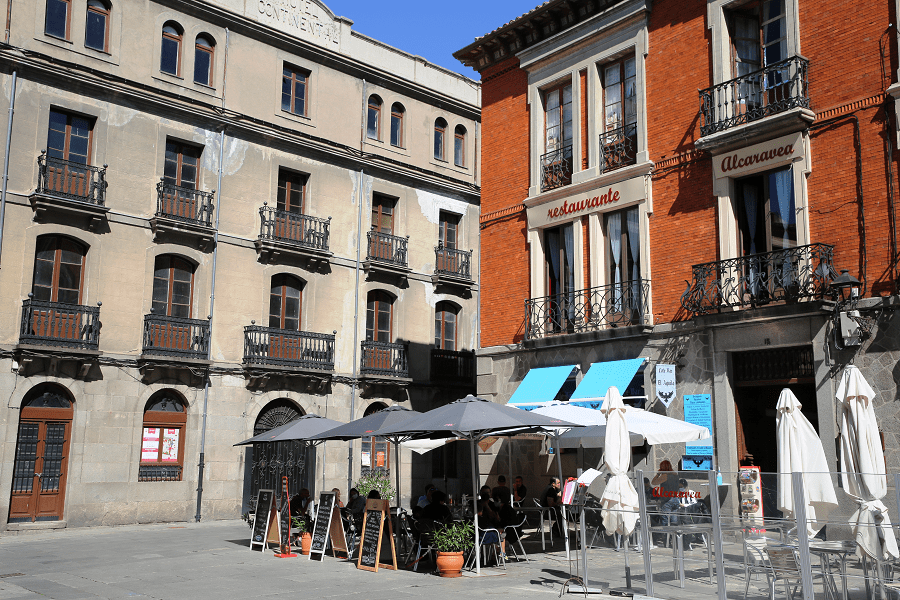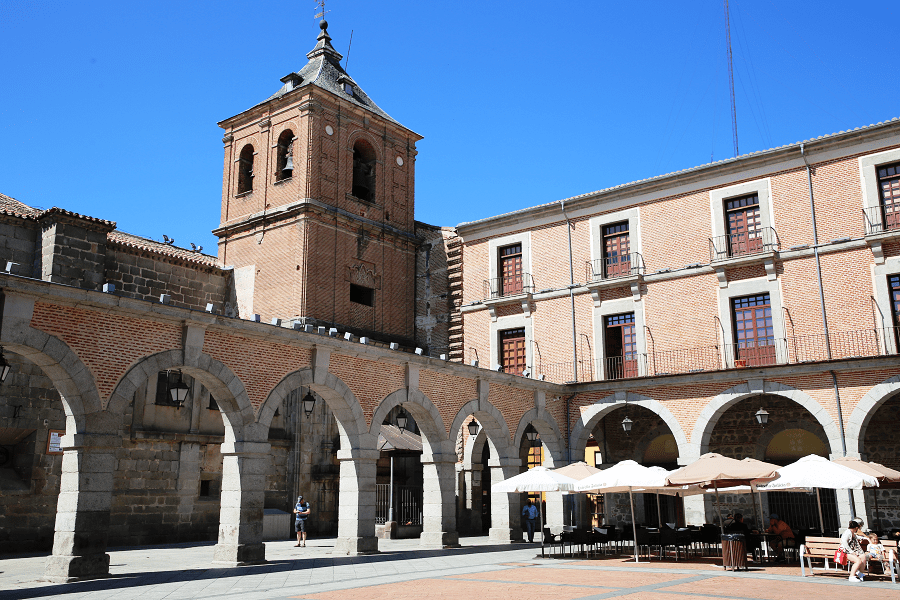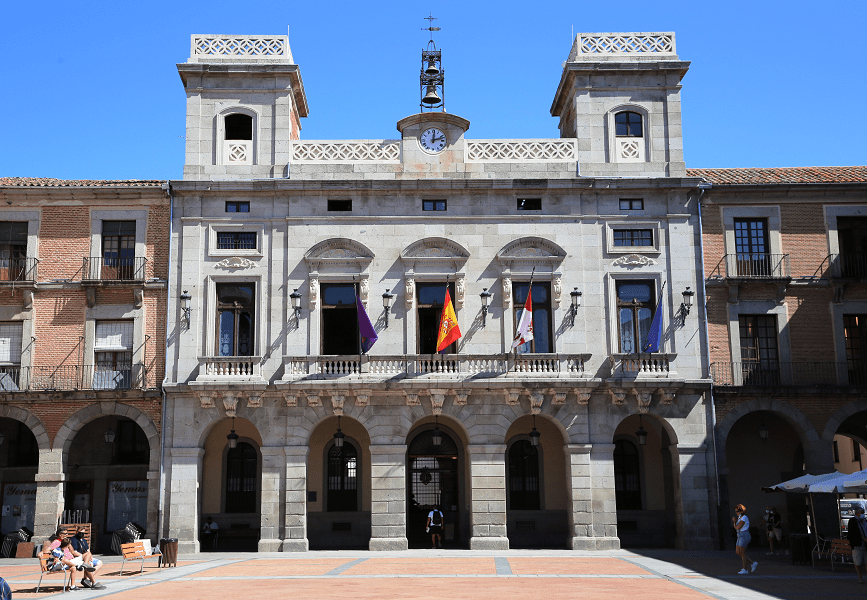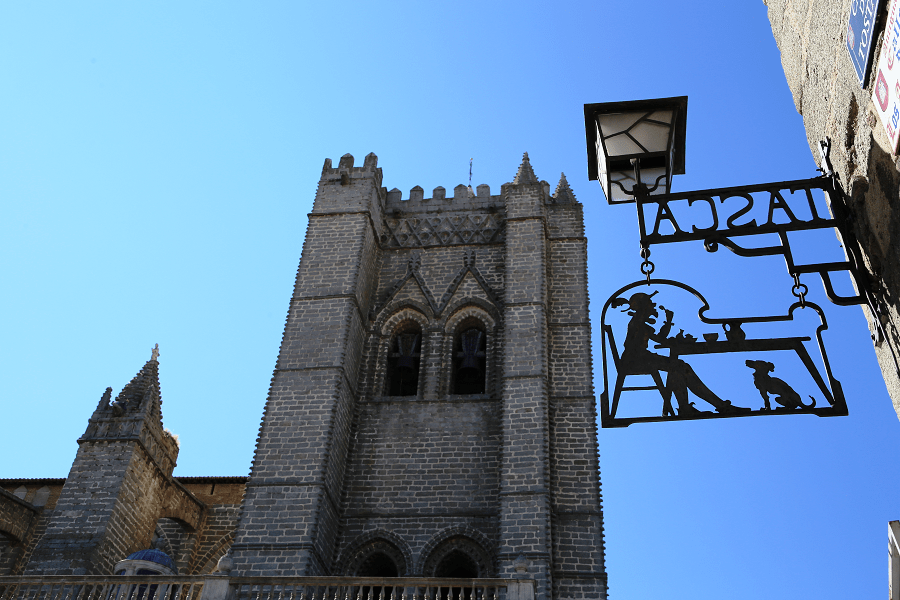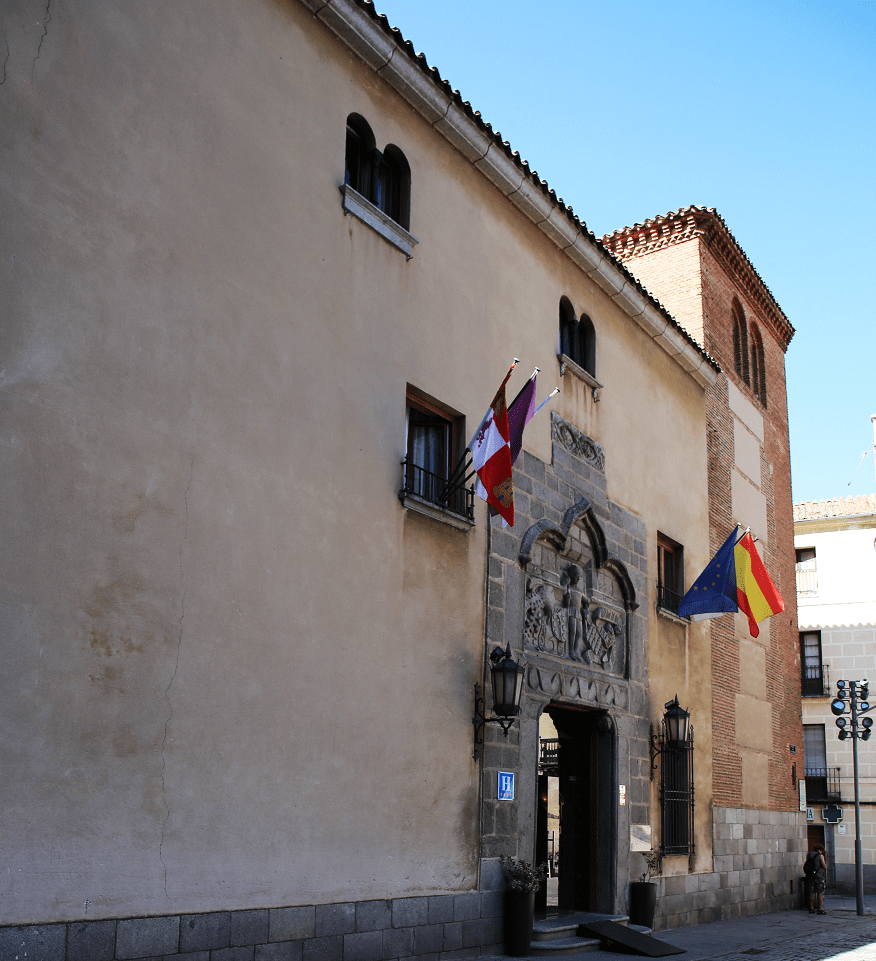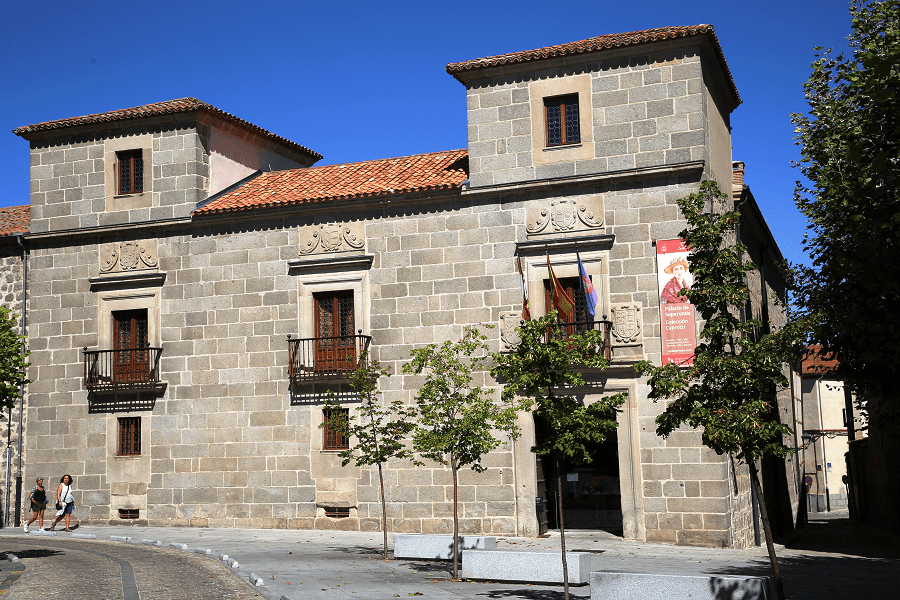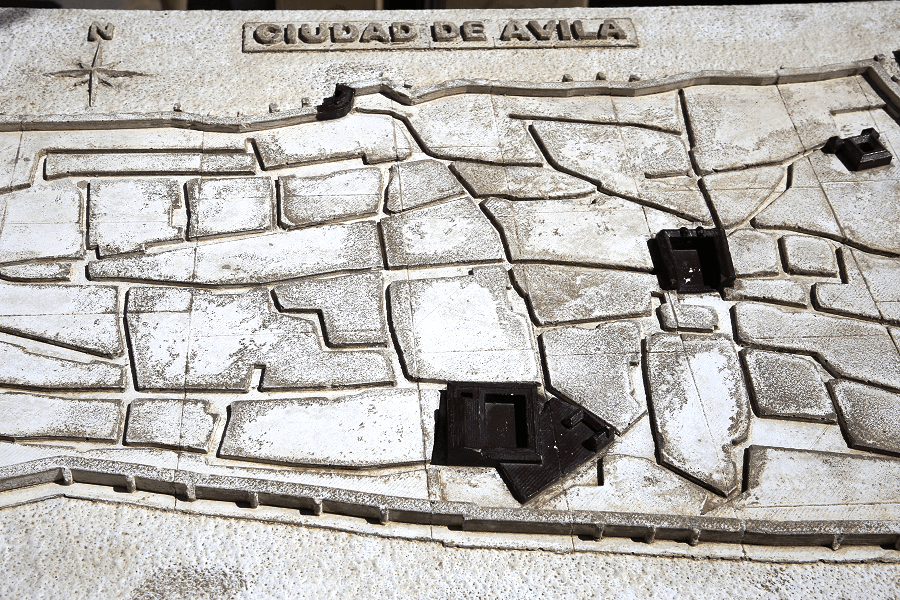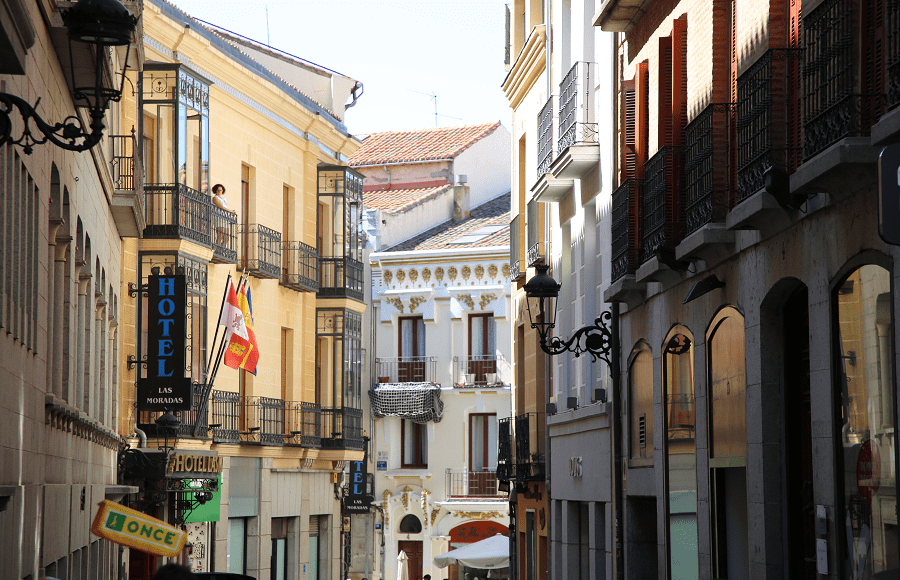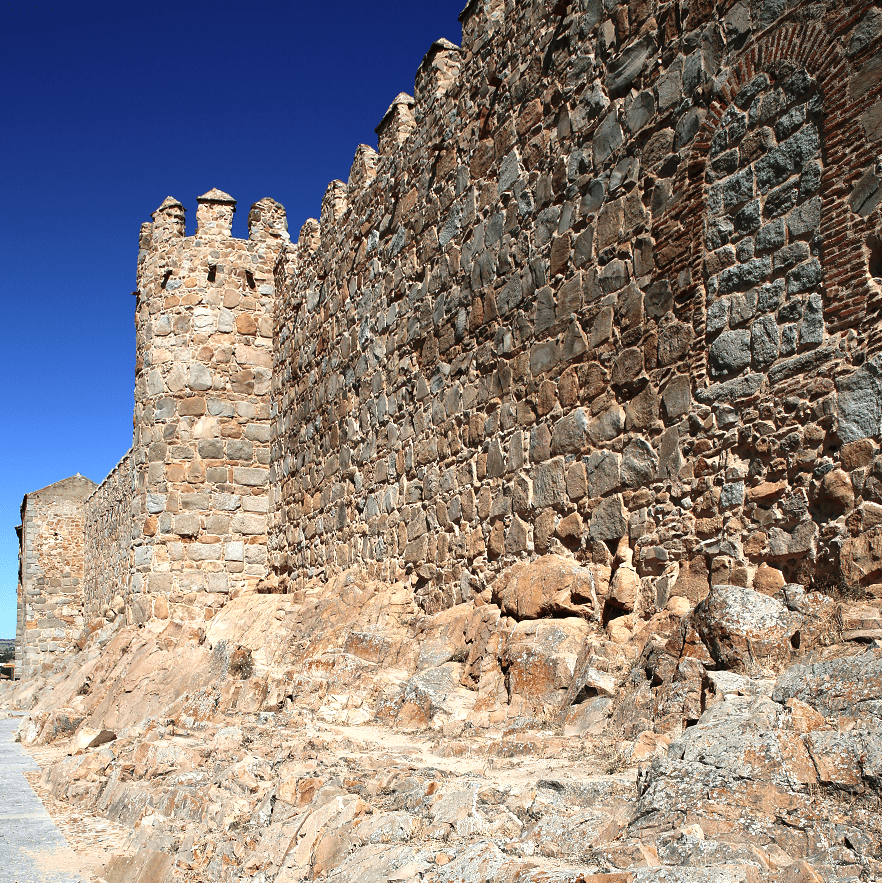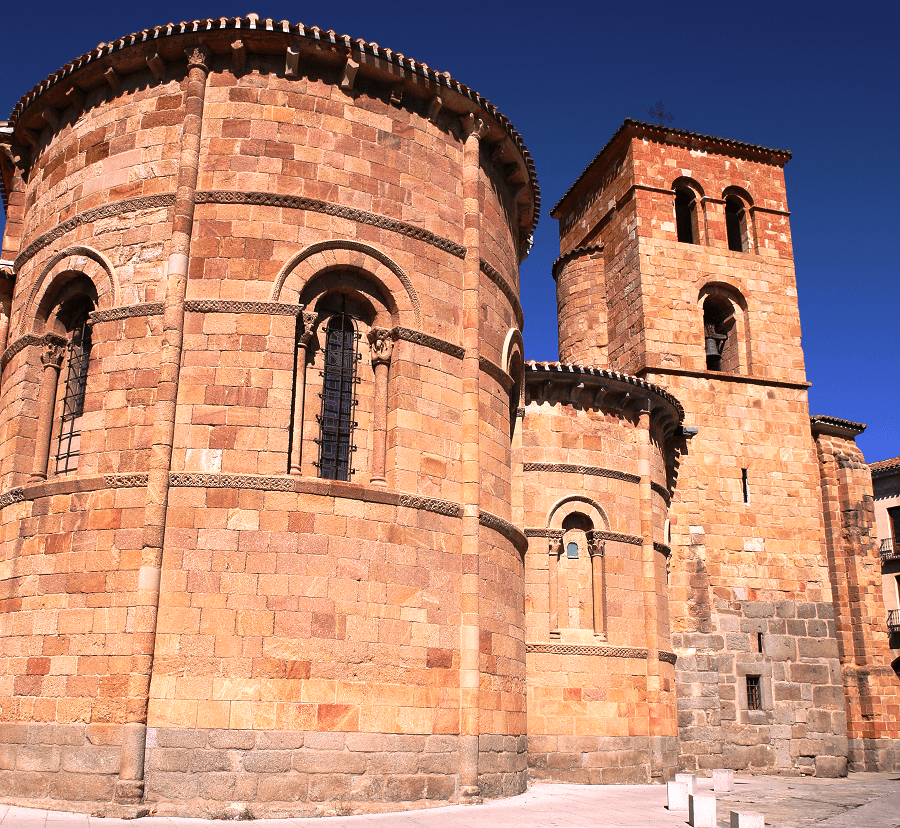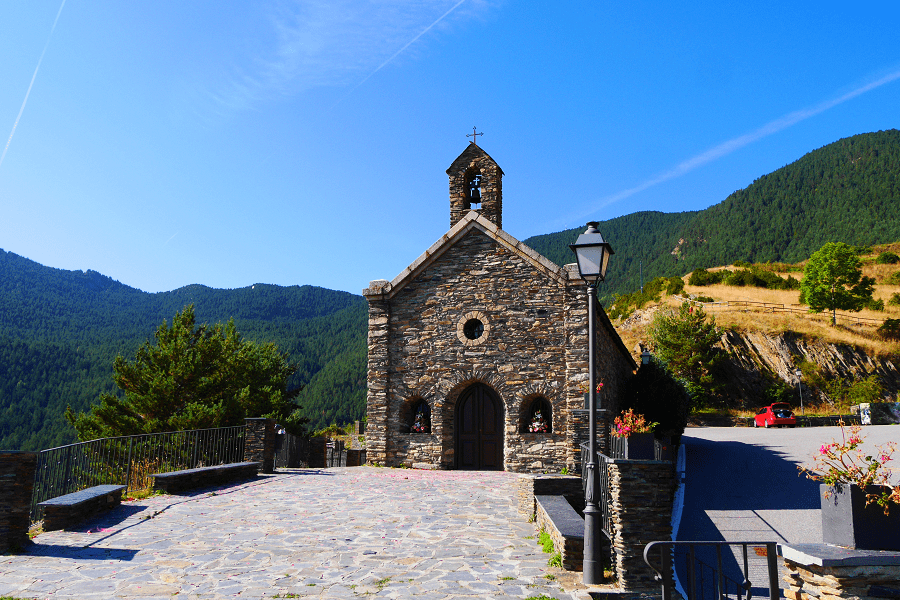Ávila is a municipality and a city, capital of the province of Ávila, in the autonomous community of Castile and León, Spain.
It is located next to the course of the river Adaja and it is the highest provincial capital in Spain, at 1131 m above sea level, snowfalls are relatively frequent in its urban area during winter. The city has a continental Mediterranean climate with mountainous nuances.
After the Roman foundation and the assimilation of the native Vetonian population of the area – since there are no clear indications of a pre-Roman settlement in the historic center – the city would pass to Visigoth power. Ávila fell, like most of the peninsular territory, under Muslim rule at the beginning of the eighth century, and would not be definitively reconquered by Christian troops until the 11th century. It boomed during the 16th century, only to be plunged into a prolonged crisis and decline until the 19th century, when the construction of the railroad succeeded in boosting economic development.
Distinctly known by its medieval walls, Ávila is sometimes called the Town of Stones and Saints, and it claims that it is one of the towns with the highest number of Romanesque and Gothic churches per capita in Spain.
Ávila was declared a UNESCO World Heritage Site in 1985. The site originally consisted of the walled city and four extra muros churches. The number of churches included in the site has since been increased.
Ávila holds the titles of “Ávila del Rey” – awarded by Alfonso VII -, “Ávila de los Leales” – awarded by Alfonso VIII – and “Ávila de los Caballeros” – awarded by Alfonso X – all of them present on the flag of the city.
Main attractions
The main landmark in the city is the imposing Walls of Ávila (11th–14th centuries), begun in 1090. The enclosed area is 31 hectares with a perimeter of 2,516 metres, 88 blocks of semicircular towers, 2,500 merlons, curtain walls 3 m thick, with an average height of 12 m, and 9 gates.
The walls represent the largest fully illuminated monument in the world. It is possible to walk upon the walls for roughly half their circumference.
The Cathedral of the Saviour is a Catholic church built in the late Romanesque and Gothic architectural traditions.
It was planned as a cathedral-fortress, its apse being one of the turrets of the city walls. It is surrounded by a number of houses or palaces, the most important being: the Palace of the Evening, the Palace of the Infant King, and the Palace of Valderrábanos, which were responsible for the defence of the Puerta de los Leales (The Gate of the Loyal Ones) also known as La Puerta del Peso de la Harina (The Flour Road Gate).
The Basilica de los Santos Hermanos Mártires, Vicente, Sabina y Cristeta, best known as Basilica de San Vicente, is a church – one of the best examples of Romanesque architecture in the country.
The church is built using rock extracted from quarries of the nearby La Colilla. However, as in all the churches of Avila where this rock is described as sandstone, it is in fact decomposed granite. It is attributed to Giral Fruchel, the architect who introduced the Gothic style in Spain from France.
San Vicente is on the Latin cross plan, with a nave and two aisles ending in semicircular apses, with a large transept, ciborium, atrium and a crypt.
The monastery is protected as part of a World Heritage Site, “Old Town of Avila and its extra muros churches”; it is listed as one of ten extra muros churches (that is, outside the walled city) included in the site.
The Convento de San José (Convent of Saint Joseph) is a monastery of Discalced Carmelite nuns. It is situated not far from the center of the city but outside the medieval walls. Saint Teresa of Jesus was the driving force behind the foundation of the monastery, which was built from 1562 onwards. The church (by Francisco de Mora) was only begun in 1607 after Saint Teresa’s death. The statue in the facade was commissioned by King Philip III of Spain via artist Giraldo de Merlo.
Museums
The main museum in the city is the Museo de Ávila, inaugurated in 1911. In 1968 it acquired the identity of a Provincial Museum. It has been managed by the Junta de Castilla y León since 1987. The museum has two locations: the Casa de los Deanes, a 16th-century Renaissance palace that functions as the main headquarters, and the Santo Tomé church, originally built in the 12th century which is used as a store that can be visited. The collections are included in three large sections: a representative of the rural culture of the province, another that collects pieces found in Avila territory from prehistory to the 19th century and finally one dedicated exclusively to archaeological pieces found in urban excavations in the city of Avila.
Inside the Cathedral of Ávila, the Cathedral Museum is installed, which houses an exhibition of religious art.
There is also a permanent exhibition in the Convent of the Incarnation, which shows various historical testimonies of Saint Teresa of Jesus as well like various pieces of religious art. It also preserves pieces related to the life and work of Saint John of the Cross.
In the crypt of the Santa Teresa convent there is a museum of Santa Teresa, which exhibits the work and life of the saint, as well as various pieces of religious art.
Inside the Santo Tomás monastery there are several museums, such as Oriental Art and Natural Sciences. The Oriental Art Museum was inaugurated in 1964, is located in the third cloister of the Santo Tomás monastery and houses a varied collection of pieces from Japan, Vietnam, the Philippines and China.
The Natural Sciences Museum houses a collection of specimens zoos that were part of the former cabinet of natural history of the Dominican order of the monastery.
The city also has the Caprotti museum, located in the Palace of Superunda, which houses the work of the Italian painter Guido Caprotti, who has lived in Ávila since 1916.
Cuisine and the best restaurants
Typical dishes of the town and region are “Judías del Barco”, “Chuletón de Ávila”, “Patatas revolconas” and “Yemas de Santa Teresa”. Also worth mentioning is “Hornazo”, “Bun stuffed with sausage, bacon, steak and eggs”, “Mollejas de ternera” or the “Cochinillo”, which can be found in the capital and in Arévalo.
Yemas de Santa Teresa sweet can always be found in the traditional pastry shop “La Flor de Castilla”. In the other bakeries in the town it is produced under the name “Yemas de Ávila”, or simply “Yemas”, produced as its name indicates from egg yolk.
Chuletón de Ávila – a grilled T-bone steak, best cooked rare, which can be enjoyed in any hotel in the town. It is made from Avileña-Negra ibérica, an indigenous black cow known for its excellent meat, whose fame transcends the borders of the province and the country.
There is one Michelin list restaurant in the city:
El Almacén, Carretera de Salamanca 6, 30 – 100 EUR • Traditional Cuisine
How to get to?
The Ávila Railway Station serves the town. The closest airport is Adolfo Suárez in Madrid – Barajas.
Distance by car to other main cities of Castile and León and Madrid
Madrid 1 hr 18 min (109 km) via A-6 and AP-6
Valladolid 1 hr 37 min (120 km) via N-601 and N-403
Burgos 2 hr 38 min (262 km) via A-62 and A-6
Palencia 1 hr 53 min (186 km) via A-62 and A-6
León 2 hr 36 min (264 km) via A-6
Salamanca 1 hr 5 min (109 km) via A-50
Segovia 49 min (64.3 km) via N-110 and AP-51
Soria 3 hr 3 min (254 km) via N-110
Zamora 1 hr 46 min (178 km) via A-66 and A-50
Main information
Area: 231 sq. km (municipality)
Coordinates: 40°39′16″N 4°41′46″W
Population: 58 369
Languages: Spanish
Currency: Euro
Visa: Schengen
Time: Central European UTC +1





